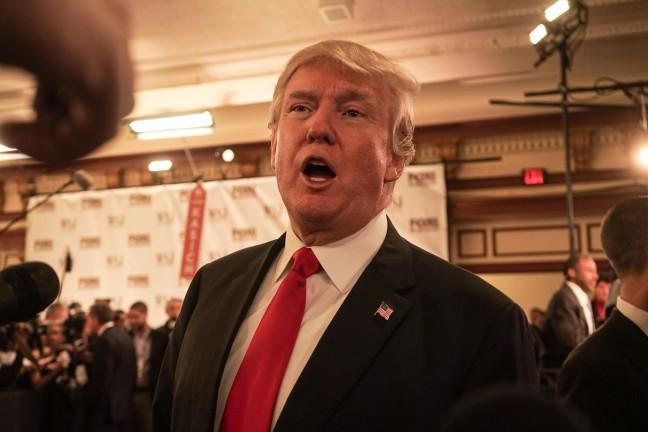The defeat of repealing and replacing Obamacare is a massive setback for President Donald Trump and the Republican Congress. If they want to get back on track, then they must implement a tax reform bill. In terms of public policy, it will help spur economic growth. In terms of politics, it will give Republican politicians in Washington something to run on in 2018 and 2020.
The economic benefits of a tax cut are so strong that the GOP cannot simply ignore passing one. America’s tax code is holding the economy back. In 2013, a study published by German economists Sarah Keller and Deborah Schanz focused on the tax attractiveness of over 100 countries. They found that the United States ranked a dismal 94 out of 100.
Key to making the United States more economically competitive are tax cuts on businesses. At 35 percent, our country has one of the world’s highest corporate tax rates. A report by Michael Schuyler, a senior fellow at the Tax Foundation, estimated that if there was a cut down to the rate of 25 percent then our nation’s GDP would increase by 2.2 percent and raise wages by 1.9 percent. This kind of economic growth only helps the government in the long-term, raising federal revenue by 0.8 percent.
As expected, many politicians in other countries fear American tax reform proposals. Socialists in the European Parliament fear “a race-to-the-bottom” that will favor “big multinational enterprises.” They forget the other winners of reducing the corporate taxes. Sure, multinationals benefit, but so do people who can find new jobs, investors who are exposed to new opportunities and governments that receive new revenue.
Wisconsin already has a favorable tax environment for businesses. That’s why the state is getting investments from companies like Foxconn, Haribo and Amazon. If a substantial tax cut at the federal level is put into place, even more businesses will expand into the Badger State.
It’s the classic case of what happens when lawmakers subscribe to the Laffer Curve. Named after economist Arthur B. Laffer, who served as an adviser to President Ronald Reagan, the curve is about incentives. Maintaining high taxes while other countries lower taxes will ultimately lead to less growth in the economy and in government revenue.
Businesses will notice the favorable tax environment in another country and choose to move and grow there. This means a reduction in the potential revenue the government can receive. To put it simply, changes in tax policy leads to changes in taxable income.
Laffer proved that his curve was true during the Reagan presidency. The income tax was reduced from 70 percent to 28 percent in his administration. Top income earners found lower taxes appealing and brought their capital out of tax havens and into the economy. The share paid by taxpayers in top 10 percentile went from 49.3 percent in 1980 to 57.2 percent in 1988. Real income tax growth declined by 2.8 percent in the years prior to Reagan’s first tax cut and increased by 2.7 percent after it.
We see this across the world. It’s why so many nations are lowering taxes in the era of globalization. Hungary will cut its corporate tax rate to the lowest in the European Union, from 19 percent to 9 percent. Croatia is cutting corporate taxes from 20 percent to 18 percent for big companies and from 20 percent to 12 percent for small companies. In a February referendum, Swiss voters decided to maintain their pro-business environment by rejecting a plan that would end tax breaks for corporations.
Unfortunately, while strong evidence for tax cuts exists, the bigger challenge for the Republicans in Congress is unity. Divisions that sunk health care reform can also sink tax reform. Their majority in the Senate is extremely narrow. It only took three Republican senators out of 52 to prevent any changes to Obamacare.
Let’s say legislation is written that will reduce the corporate tax rate from 35 percent to 25 percent. It’s easy to anticipate House Freedom Caucus members and senators like Rand Paul to call for something lower, like 15 percent.
It’s just as easy to expect resistance from moderates like John McCain and Susan Collins, who might want less of a tax cut. Many deductions and tax breaks within the corporate tax code have opponents and supporters, adding to the difficulty of creating any meaningful reform.
Whatever the details of the legislation are, Republicans inside the Beltway need a legislative victory if they want to keep their majorities. According to RealClearPolitics, the latest polling average for the generic congressional vote in 2018 gives the Democrats a comfortable lead. Sure, the polls were off in 2016, but is it worth taking the risk of ignoring them this time?
Republicans haven’t held the White House for eight years. This is a golden opportunity to implement conservative policies. Tax reform is needed now more than ever, but it can only happen if the Republicans can unite.
If not, then like health care, it is another opportunity wasted.
John Graber (jgraber3@wisc.edu) is a senior majoring in history and political science.


